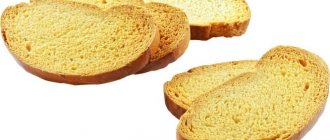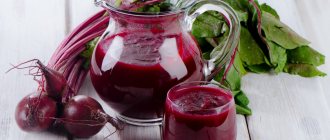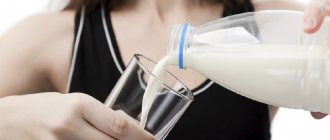Patients diagnosed with gastritis know that they have to give up many delicious foods. Those who love desserts are especially upset. After all, many of them are banned. A therapeutic diet involves eating food that will not irritate the gastric mucosa.
Today we will answer the question of whether it is possible to eat cookies for gastritis. This delicacy is one of the most popular and has a variety of recipes. And many people love confectionery, because they are in such harmony with coffee, tea, and cocoa.
Cookies for gastritis
Manufacturers present consumers with a huge range of products, with various flavoring additives, dough manufacturing technology, and fillers. The recipes of different types differ in the number of ingredients.
Cookies can be biscuit, chocolate, butter, made from long dough (biscuits, crackers), milk, oatmeal, with cocoa, cottage cheese, puff pastry. The list includes the most popular names; in fact, there are many more varieties.
Regardless of the recipe, any cookie contains flour. And as you know, such products are difficult to digest in the stomach and provoke increased production of hydrochloric acid and inflammation. If you abuse it by eating dessert in large quantities, the disease becomes chronic. Any deviations from the usual way of life make themselves felt by exacerbation of gastritis, pain, heartburn, and nausea.
Dishes containing rye or wheat flour seem harmless at first glance. After all, such flour contains cellulose and pentose starch. However, the dough turns out to be “heavy” for the stomach, causes stagnation, and it takes more time to process food.
And taking into account the fact that not only food additives are added to cookies, but also dyes, emulsifiers, and fillers, consumers receive a harmful food product.
Useful properties of crackers
Rusks contain large amounts of fiber, which can have a very positive effect on the digestive system. The chemical composition also contains a huge amount of other useful substances:
- B vitamins;
- amino acids lysine and methionine;
- microelements - potassium, sodium, magnesium, calcium, iron, phosphorus.
Due to their high carbohydrate content, crackers are well digested by the digestive system. Therefore, they are recommended by nutritionists for older people, also during the period of recovery of the body after poisoning and intoxication - the stomach returns to normal operation, and the body receives the necessary nutrients and energy.
In addition, gastroenterologists and nutritionists point out the benefits of eating crackers compared to fresh bread, so those who want to lose weight or lead a healthy lifestyle try to replace bread with them in their diet. It is worth noting here that rye crackers in this regard will be more useful than wheat crackers, because they contain more nutrients with less calories.
Why is diet important in the treatment of gastritis?
Irritation of the gastric mucosa requires long-term treatment, in which proper nutrition is an important factor. No medicine will help if you ignore this rule. The causes of the disease are various, ranging from stress, poor nutrition, the habit of eating on the go, dry food, fast food, to viral, infectious diseases, living in a disadvantaged area.
According to the latest statistics, about 64% of the world's population suffers from some form of gastritis. Regardless of whether the secretion of gastric juice is increased or decreased, it is necessary to follow several basic principles of a healthy diet:
- Eliminate products with coarse fibers from the menu.
- Do not eat raw vegetables, only boiled, baked, stewed.
- Limit your consumption of flour products to a minimum.
- If the acidity of the gastric juice is high, it is prohibited to introduce herbs, spices, confectionery, smoked meats, strong tea, pork, rich broths, sour fruits, sauces, marinades, and lard into the diet.
If you have hypoacid gastritis, you should not eat fats, smoked, fried, spicy foods, confectionery, canned food, or fresh bread.
Meals should be frequent, it is better to eat in small portions 6-7 times a day.
Diversify your diet with porridges made with water or low-fat milk, puree soups, omelettes, boiled eggs, low-fat cottage cheese, veal, rabbit, chicken, steamed cutlets, sea and river fish, and vegetable dishes.
As you can see, during the period of exacerbation, flour and confectionery products are excluded from the menu. This is exactly what cookies are.
Product recommendations
Bread and other flour products
We recommend stale or dried bread made from premium or first grade wheat flour, dry biscuits, and dry cookies. Twice a week you can have well-baked savory buns, pies with apples, boiled meat, fish, eggs or jam, and cheesecake. Any fresh bread, rye bread, butter or puff pastry products are prohibited.
Soups
Recommended soups made from non-prohibited pureed vegetables in potato or carrot broth, milk soups with the addition of pureed rolled oats, semolina, rice and other cereals, vermicelli with pureed vegetables, pureed milk soups with the addition of pureed vegetables, pureed soups from pre-cooked meat or pureed non-acidic berries with the addition of semolina. Before preparing the soup, the flour should be dried. For dressing, use butter, a mixture of eggs and milk, and cream.
Meat and fish broths, mushroom and strong vegetable broths, cabbage soup, borscht and okroshka are prohibited.
Meat and poultry
The meat is prescribed to be lean, without tendons, fascia and skin in birds. Beef, young lean lamb, trimmed pork, chicken and turkey meat, boiled in water or steamed, boiled veal, rabbit or chicken in pieces. You can eat cutlets, meatballs, dumplings, soufflé, mashed potatoes, steamed zrazy, boiled beef stroganoff, boiled meat baked in the oven, boiled tongue and liver.
It is prohibited to eat fatty and stringy meats and poultry, duck, goose, canned food, and smoked meats.
Fish
We recommend lean fish meat without skin, in the form of cutlets or pieces, boiled in water or steamed. Fatty, salted fish and canned food are prohibited.
Milk and dairy products
Milk, cream, non-acidic fermented milk products (kefir, yogurt, acidophilus), fresh and non-acidic pureed cottage cheese and sour cream are allowed. Baked cheesecakes, curd soufflé, lazy dumplings and puddings are allowed to be consumed. Mild cheese can be eaten grated, sometimes in small slices.
Sour dairy products, sharp and salty cheeses are prohibited. The use of sour cream is limited.
Eggs
It is allowed to include 2-3 eggs per day in the diet, cooked soft-boiled or in the form of a steam omelet. You should not eat fried or hard-boiled eggs.
Cereals
You can prepare dishes from semolina, rice, buckwheat, and oatmeal. They are used to cook semi-viscous and pureed porridges in milk or water, steam soufflés, and cutlets. Boiled pasta and vermicelli are allowed. Millet, pearl barley, barley, corn cereals, and legumes are prohibited.
Vegetables
Dishes made from potatoes, carrots, beets, cauliflower and 100 g per day of ripe, non-acidic tomatoes are allowed. In limited quantities - green peas. Vegetables should be boiled in water or steamed and pureed, so you can prepare purees, soufflés, and puddings. Early pumpkin and zucchini can be eaten ungrated. It is recommended to add finely chopped dill to soups.
White cabbage, cucumbers, turnips, rutabaga, radishes, sorrel, spinach, onions, any pickled and pickled vegetables, mushrooms, and canned food are prohibited.
Snacks
It is recommended to prepare salads from boiled vegetables, meat or fish, boiled tongue, liver pate, doctor's, dairy, diet sausage, jellied fish in vegetable broth. You can also include sturgeon caviar in your food, sometimes low-fat herring and mincemeat, mild types of cheese, low-fat and unsalted ham. Salty and spicy snacks, any canned food and smoked foods are prohibited.
Fruits, sweets
Fruits are recommended sweet, pureed, boiled and baked. A variety of purees, jelly, jellies, mashed compotes, snowballs, butter cream, as well as sugar, honey, marshmallows, and sweet jam are allowed. Sour or unripe fruits and berries rich in fiber, raw dried fruits, chocolate, and ice cream are prohibited.
Sauces, spices
You can: milk sauces without sautéed flour, to which you can add butter, sour cream, fruit and milk-fruit sauces. In limited quantities, dill, parsley, vanillin and cinnamon. Nalzya: meat, mushroom, tomato sauces, mustard, pepper, horseradish.
Beverages
Weak teas, teas with milk or cream, weak cocoa or coffee with milk are allowed. Juices from sweet fruits and berries and rosehip decoctions are allowed. Carbonated drinks, black coffee, and kvass are prohibited.
Fats
We recommend unsalted ghee butter from cow's milk, the highest grade, as well as refined vegetable oils. All other fats are prohibited.
Example of a pureed therapeutic diet menu No. 1
First breakfast: soft-boiled egg, pureed rice porridge with milk and tea with milk. Second breakfast: baked apple with sugar. Lunch: pureed oatmeal soup with milk, steamed meatballs with carrot puree and fruit mousse. Afternoon snack: crackers and rose hip decoction. Dinner: boiled fish baked in milk sauce, mashed potatoes and tea with milk. Before bed: a glass of milk.
Example of an unprocessed therapeutic diet menu No. 1
First breakfast: soft-boiled egg, crumbly buckwheat porridge and tea with milk. Second breakfast: fresh non-acidic cottage cheese and rosehip decoction. Lunch: vegetarian potato soup, boiled meat baked with bechamel, boiled carrots, compote of digested dried fruits. Afternoon snack: a decoction of wheat bran with sugar and crackers. Dinner: boiled fish baked in milk sauce, carrot-apple roll and tea with milk. At night, as always, milk.
Stale and fresh dried bread, as well as wheat crackers, respond better to the action of gastric juice and are digested faster than soft bread. Staling of bread is caused by changes that occur in the starch and proteins of bread during storage. Yesterday's bread is healthier than fresh bread. This is especially true for rye bread for people suffering from gastritis with high acidity and peptic ulcers. The fact is that the acidity of rye bread, which is undesirable for such patients, decreases if fresh rye bread is “forgotten” on the table overnight - during this time, the volatile organic acids that determine the acidity of the bread will evaporate and the product will become dietary. Bread that is too fresh, just out of the oven, is not very good for eating: it is poorly chewed, rolls into lumps, which are difficult to absorb with digestive juices, and therefore are less digestible. Clumps of hot rye bread stuck together are especially harmful; they can even cause digestive upset. It is healthier for people suffering from diseases of the stomach, liver and heart to eat yesterday's or slightly dried bread. Soft bread does not need to be chewed for a long time; it slips into the throat on its own. But the old folk wisdom says: “It is not what is eaten that is swallowed, but what is chewed.” Saliva plays a decisive role in the digestion and absorption of bread. Poorly chewed bread, swallowed with slippery pieces, turns our intestines into a kind of distillation apparatus. Microbes like yeast live in it. They cause fermentation, converting bread starch into alcohol and carbon dioxide (bread made from higher grades of flour is almost pure starch). The fresh crumb of soft bread is still in an amorphous state of starch - it has not had time to come into an orderly form. Gases swell the abdomen, causing pain and cramping, and alcohol irritates the walls of the intestines. Neither one nor the other adds to our health. Soaked crackers can be considered equivalent to bread. Stale bread can be placed in a pan, which is placed in a water bath. The bread will become soft and fragrant again. There is also a way to preserve bread - freezing. Remove from the freezer an hour before use; the properties of the bread will remain the same.
Eating cookies for chronic gastritis
With this form of the disease, the acidity level may be low or high.
With gastritis with high acidity, the stomach takes a long time to digest food. Cookies contain a large amount of carbohydrates. Therefore, it refers to “heavy foods” of food. During the period of exacerbation, it is prohibited to use. During the period of remission, you can eat confectionery products made from wheat flour, including chocolate, and various non-harmful additives.
Gastritis with high acidity causes unpleasant belching and heartburn. When eating dessert, irritation of the mucous membrane begins and acid production increases. Therefore, a complete ban is introduced on such sweet products. However, you can make healthy cookies, for example, from oatmeal.
Chocolate filling
Have you been offered chocolate shortbread cookies while visiting? For gastritis it is strictly contraindicated. Chocolate itself is very fatty and difficult to digest. And if the manufacturer also added flavoring, nuts or raisins, discomfort and nausea definitely cannot be avoided. The last two ingredients are completely excluded.
Even the most dedicated sweet tooth may find it difficult to give up chocolate chip cookies. Try to at least reduce its amount, and instead of baking with milk chocolate, give preference to dark chocolate.
If you really want cookies
What to do if you have gastritis, but still want to eat something sweet?
Just follow these rules:
- Don't buy store-bought products, make cookies at home. This way you will be sure that they do not contain harmful additives.
- Try not to use when gastritis is in the acute stage.
- Prepare desserts according to recipes that will not harm the gastrointestinal tract.
- When preparing the dough, limit the number of eggs (no more than two).
- You are allowed to eat a couple of crackers, dry or oatmeal cookies a day (both plain and with the addition of marmalade, jam, preserves). But it’s better to avoid products with chocolate.
- When preparing cookies, do not add salt.
- Do not eat hard cookies. Soak it in tea, warm milk, natural yogurt, kefir.
We want to please those with a sweet tooth. There are types of cookies that you can introduce into your diet if you have gastritis. These are granola cookies. It is prepared on the basis of buckwheat, oat, wheat, and corn flakes. There is no flour in them. The taste of confectionery products is supplemented with nuts, dried apricots, natural honey, and raisins.
The dessert is not only incredibly tasty, but also perfectly energizes you for the whole working day. With low acidity of gastric juice, such cookies will only bring benefits. For those with high acidity, a restriction is introduced - no more than 3-4 cookies per day.
But oatmeal cookies can be consumed by everyone. No stomach harm. In addition, it benefits the body.
Contraindications
Definitely, cookies, like other sweets, should be abandoned during an exacerbation of the disease. You can only eat approved types of cookies, which were not baked using flavorings or flavor enhancers. Excessively sweet baked goods can aggravate stomach ulcers.
To minimize the risks when consuming baked goods, when purchasing them in a store, be sure to inquire about the composition. But, in any case, store-bought cookies always contain a lot of sugar, so it is best to prepare them yourself at home.
Cookies should appear very rarely in the diet of patients with stomach ulcers during remission. The only exception is oatmeal cookies, which can be used regularly for snacking during remission. But you should always monitor your well-being. At the slightest discomfort, baked goods should be completely excluded from the diet.
How to make oatmeal cookies at home
These cookies will be useful not only for gastritis, but for everyone without exception. To prepare, take:
- cereals;
- applesauce “Nezhenka” or other;
- dried fruits of your choice (prunes, raisins, dried apricots);
- a little olive oil.
Recipe:
- Heat the fruit puree to 60-70 degrees.
- Grind oatmeal into flour using a coffee grinder, food processor or blender.
- Mix oatmeal with mashed potatoes to form a thick mass.
- Add dried fruits.
- Grease a baking sheet with olive oil.
- Drop dough by tablespoonfuls onto baking sheet, forming cookies.
Bake in a preheated oven at 200 degrees for 20-30 minutes. Cool and serve.
You can also make dough from oatmeal crumbs by adding a little butter and sour cream. In this case, no puree is added. The dough is chilled for 1 hour in the refrigerator. It is then formed into cookies.









